Lotus Flower Offering
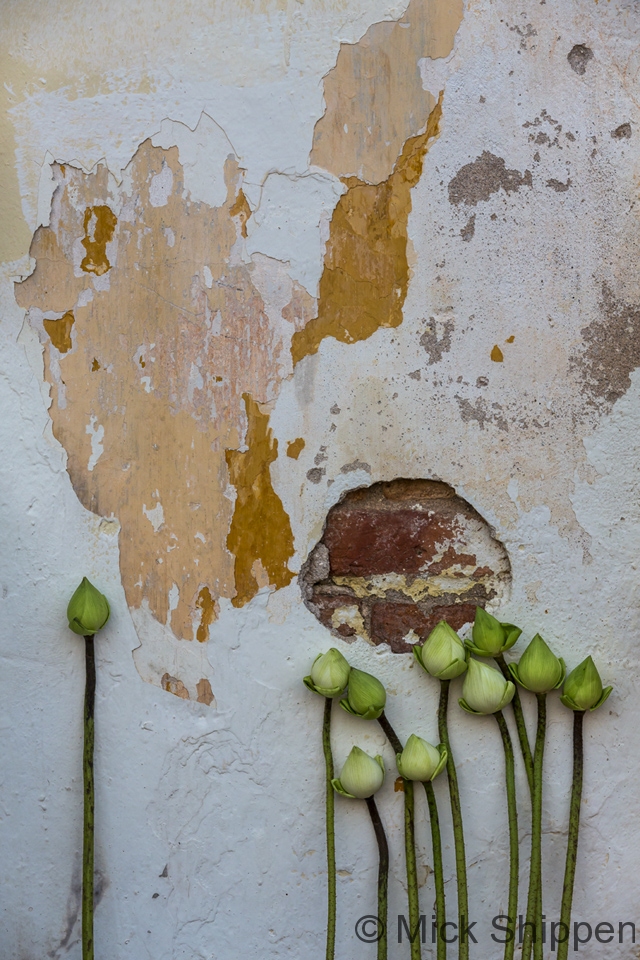
Lotus flowers left as prayer offerings leaning against a wall at Tat Luang, Vientiane.
travel photographer & writer

Lotus flowers left as prayer offerings leaning against a wall at Tat Luang, Vientiane.
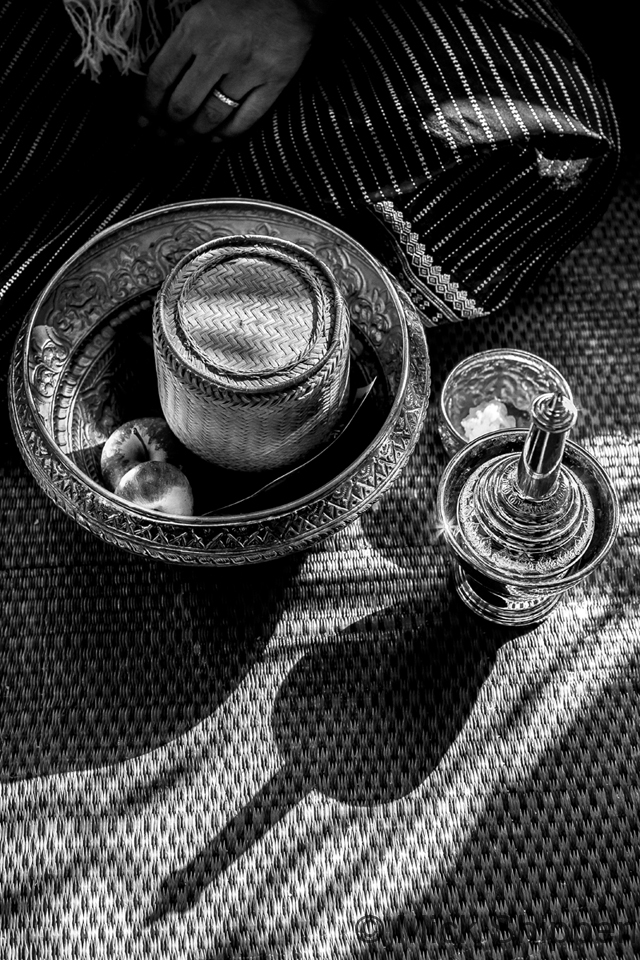
Here’s a quick black and white snapped in a Vientiane temple during prayers to mark Boun Ok Pansa, the end of rainy season retreat.

The fresh markets of Vientiane are colourful, chaotic and full of characters. Shoppers, and photographers, are spoiled for choice and there are many markets to explore.
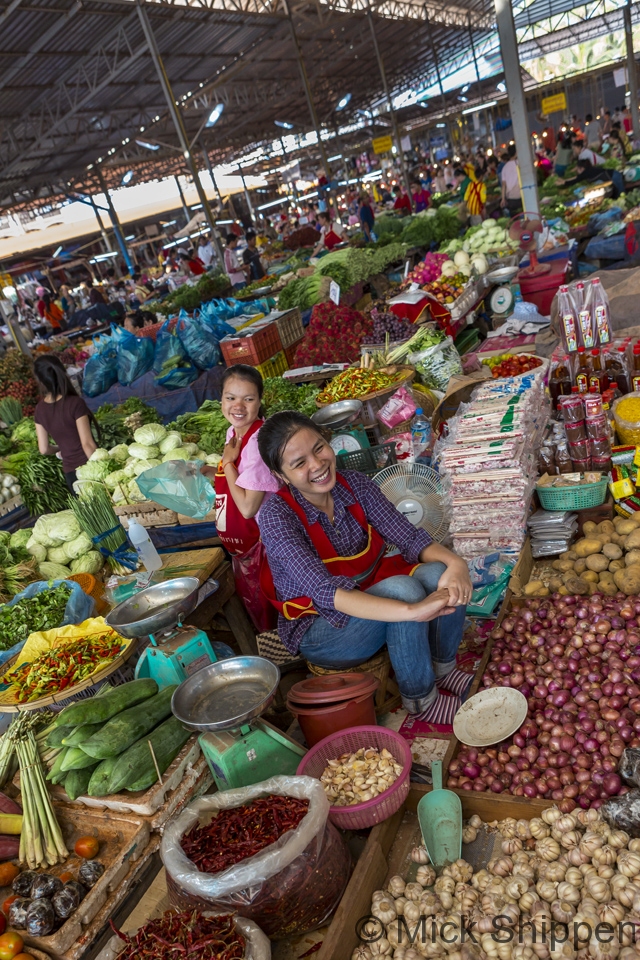
Most open either in the early morning and are done by 11 a.m. or in the late afternoon and stay until dusk. Of course there are also several markets specializing in cooked food that open around 5 p.m. until late.
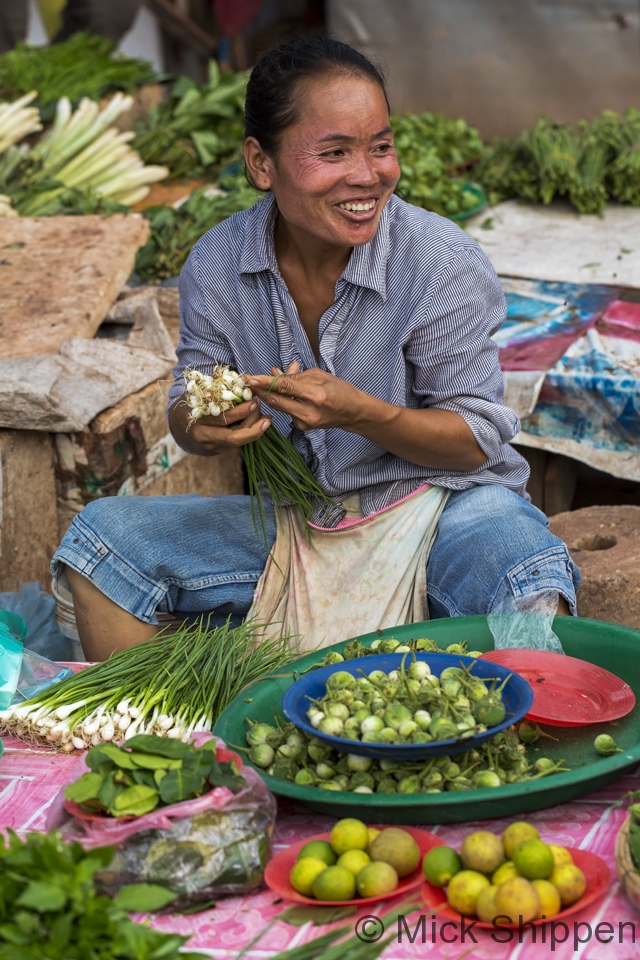
There’s an abundance of fresh fruits and vegetables imported from Thailand and China, but also masses of local seasonal produce.

You’ll see plenty of plenty of foraged food, rice field crabs, and insects.
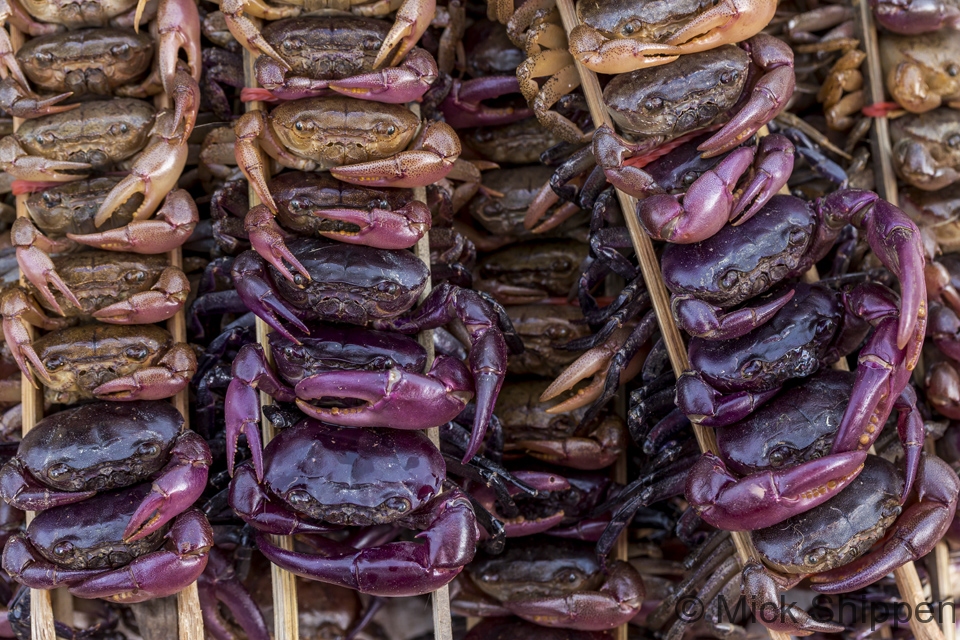
When fried and garnish with pepper, kaffir lime leaves and fish sauce, the grasshoppers and smaller crickets make an excellent beer snack. Just think of them as a land shrimp and get stuck in.
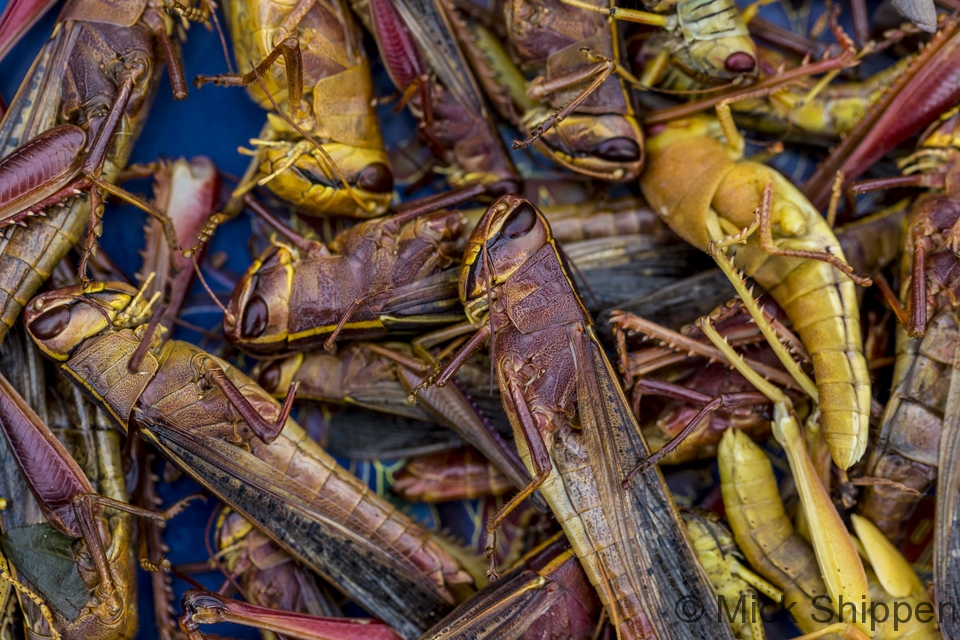
Unfortunately a lot of vendors are now mixing powdered soup mix in with the crickets to enhance the flavour, (essentially heaps of salt and MSG and other stuff that shouldn’t be allowed near a tasty fried insect), so watch out for this.
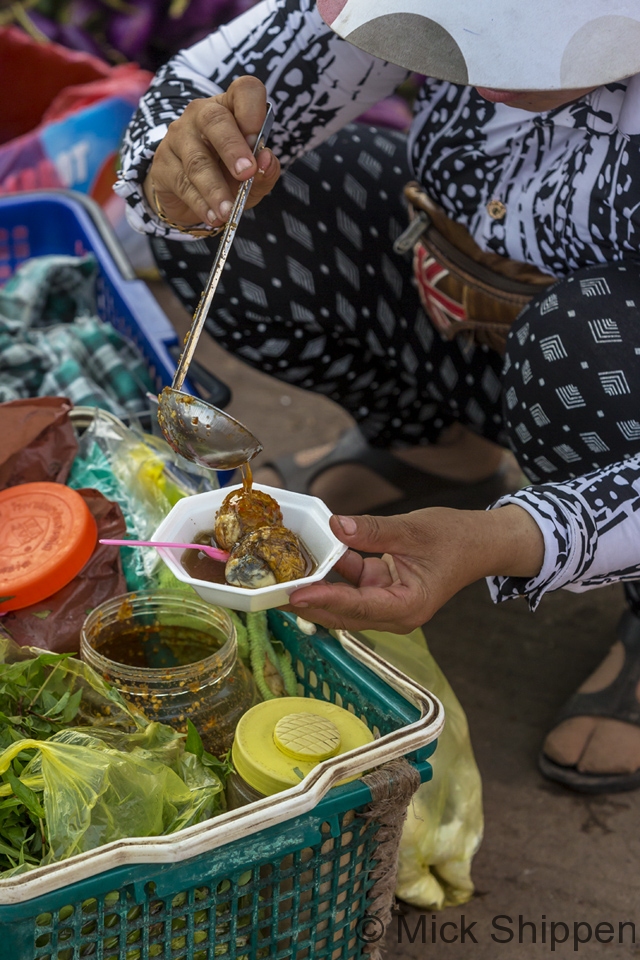
There’s a considerable Vietnamese population in Vientiane so you’ll also see ladies selling treats like duck embryo.
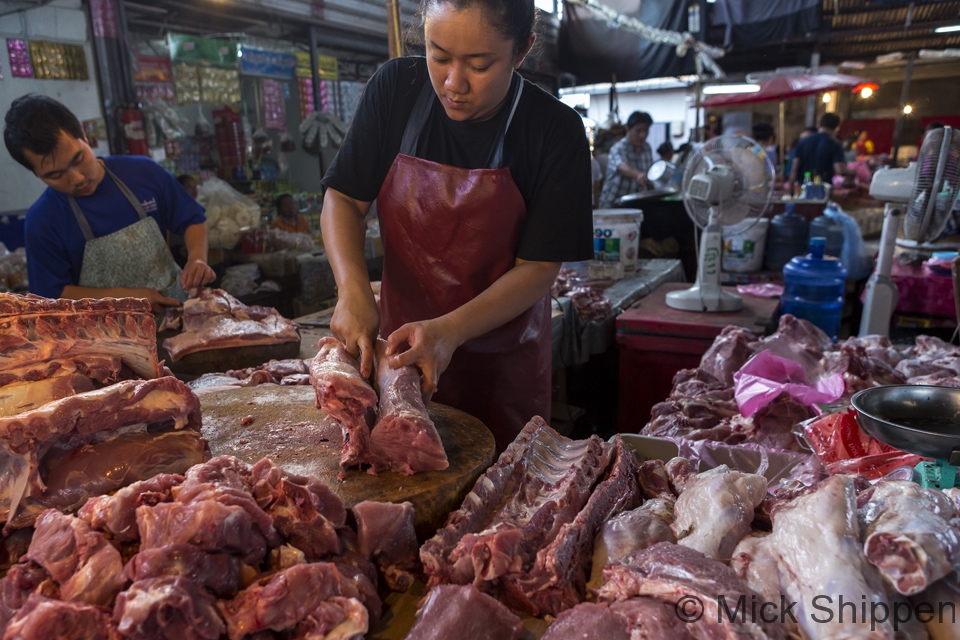
The majority of Lao people still like cook at home (although the cooked food for sale in the markets is definitely increasing). and many shop for ingredients twice a day.
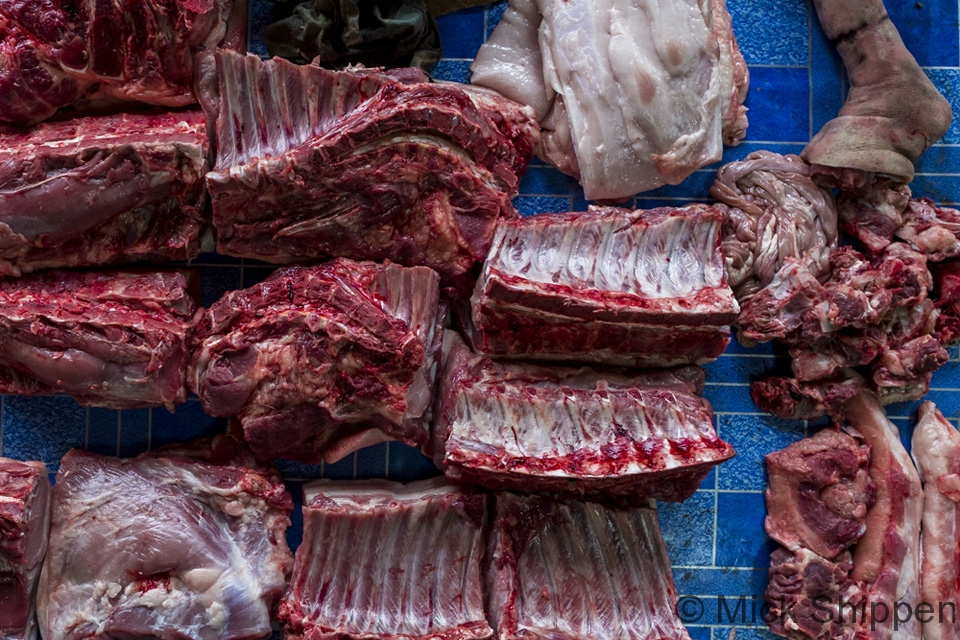
The most popular meat is pork but a considerable amount of beef is eaten.
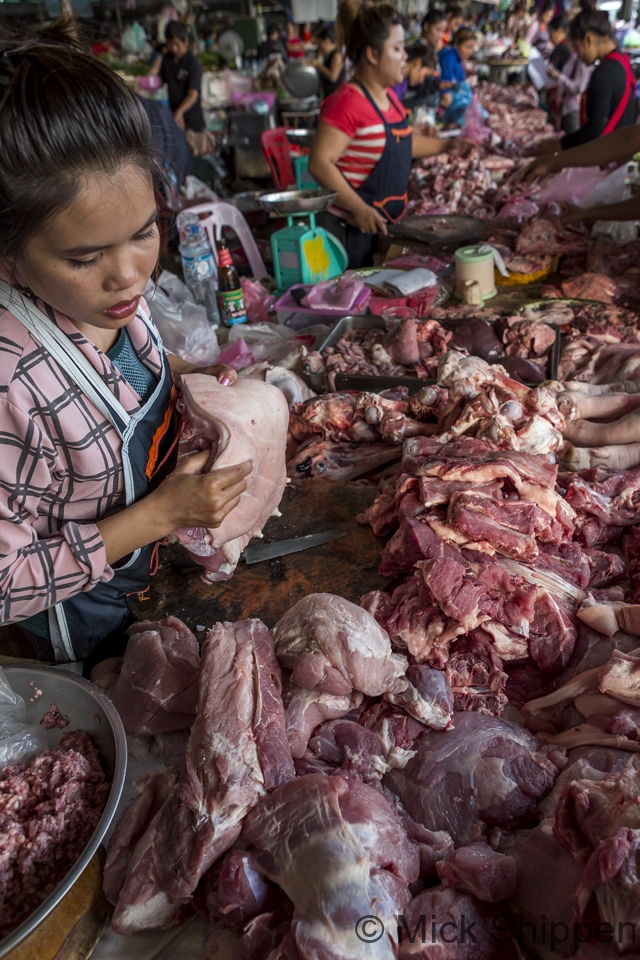
There are some impressive butchery skills on show. Thankfully it’s a world away from the sterile supermarket experience which has yet to reach Laos (although I hear it’s coming very soon).

No Lao meal is complete without fish and the Mekong river delivers an astonishing variety. Firm favourites with diners are the fat-rich catfish.

A couple of weeks ago, I promised Madam Pla Daek another post about Lao food. I’ve been extremely busy though with lots of traveling, so apologies for the delay but here you go…I hope these images get your craving Lao food and heading for the kitchen.

In Laos cuisine there are numerous jaew, dips and relishes served to add a flavour boost and texture to a meal. Thailand has its nam phrik, Mexico salsa and mole, in Lao its jaew, and no meal is complete without at least a couple.

Most are very easy to make and many jaew revolve around a set of similar ingredients, namely chillies, shallots, garlic and tomato, with the addition of the star of the show. Most important when making any jaew is to grill the base ingredients over charcoal. Charring them until the are black adds an incredible smokiness and depth of flavour. Pounding with a granite pestle and mortar also gives nice chunky texture.
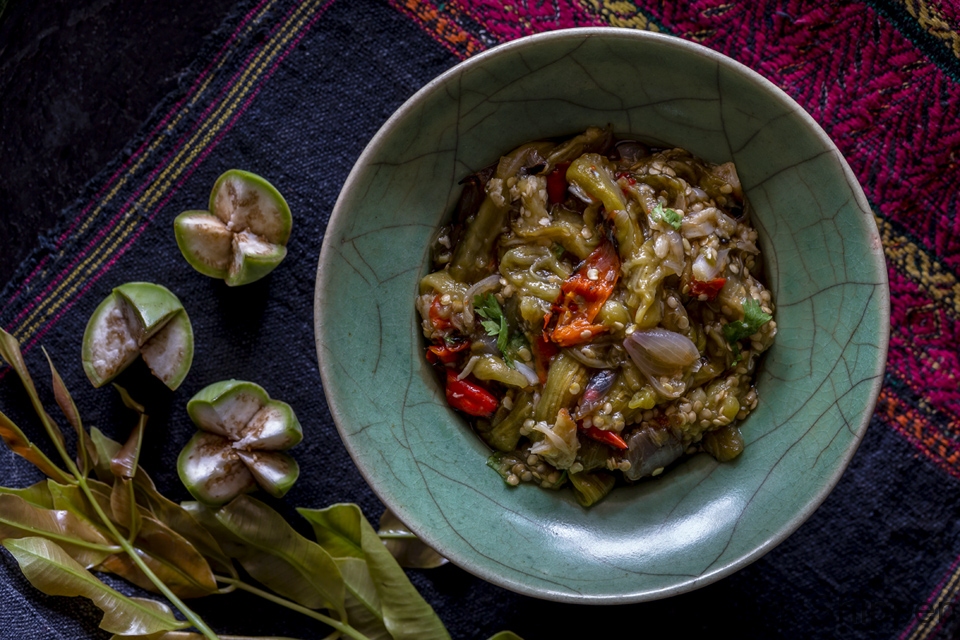
Several, such as mushroom, tomato and aubergines jaew are easily made wherever you are living in the world but there are other more obscure recipes which require Southeast Asian ingredients such as the one below made from nor ngare, a type of rattan.

There is also jaew maeng da made with grilled giant water beetles. If you are not from an insect eating country I realise you may find this a hard sell, but I urge you to try it.

The inner flesh of roasted maeng da is added to a number of dishes including the jaew below where it has been mixed with grilled fish, herbs, and of course chillies. The beetles are large, fragrant and flavour is extraordinary. The closest I can get to describing it is like a sweet I used to eat as a kid called pear drops. Try it…then try it again. As with any unfamiliar food or flavour, give it time.

The most well known jaew is jaew bong, a sweet and sticky dip from northern Laos made with smoky dried chillies and buffalo skin. It’s absolutely delicious eaten with sin sawan, sun dried beef and ranks as one of my all time top beer snacks. More on these two at a later date.
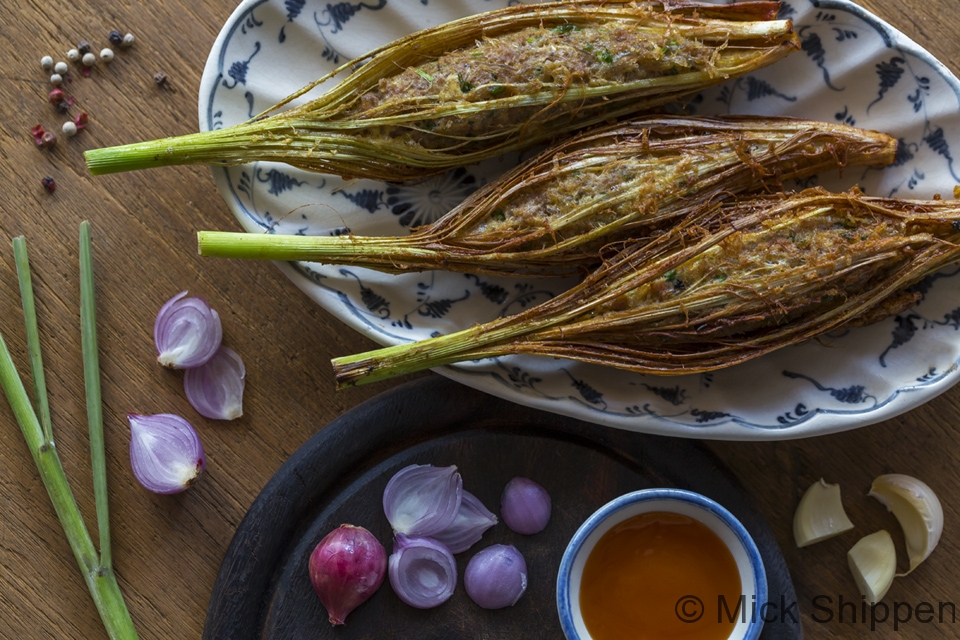
Lao food gets a bad press, and I think it’s undeserved. Granted, the competition from neighbouring Thailand and Vietnam is stiff but there’s certainly plenty of delicious and interesting food worth discovering in landlocked Laos.

Unfortunately the restaurant scene hasn’t really developed and until relatively recently very few people went out to eat. Most of the country’s best cooks, therefore, are in the home. In the last few years a few night markets have popped up in Vientiane with home cooks selling a wide variety of jaew or dips, curries, soups and grilled meats and fish. This is where you will find the best food. Restaurant menus on the other hand still tend to be limited to standard fair with uninspired and oversized portions prepared with little care.
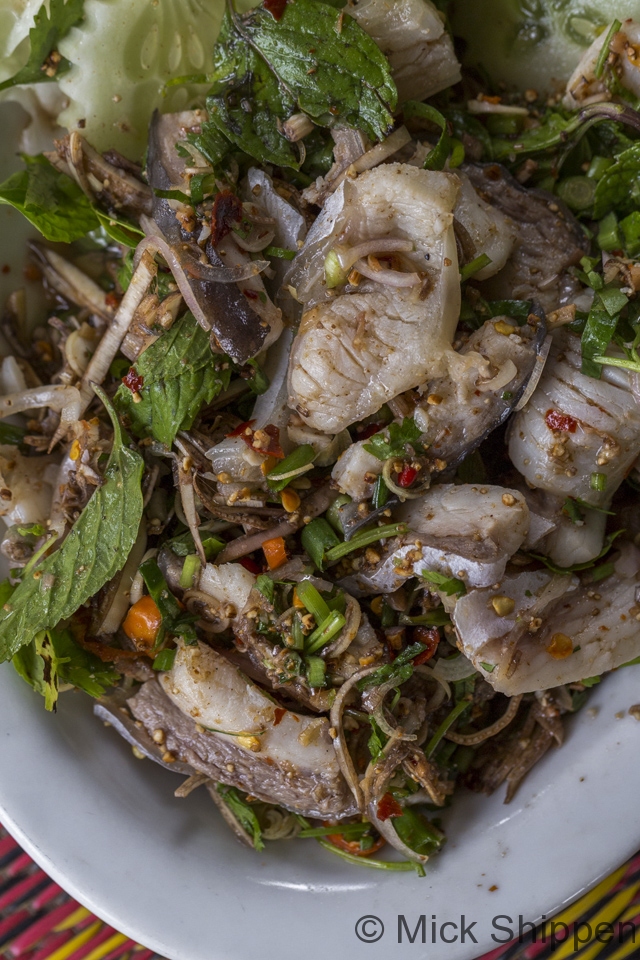
In common with northern and northeast Thailand, Lao eat mainly glutinous rice, a malleable steamed grain served at the table in woven baskets, although boiled fragrant rice is also eaten. Central to the Lao diet is a wide variety of freshwater fish which are steamed, grilled and fried, or made into a salad called goy pla. It is similar to the Thai laap and made with chopped river fish tossed in lime juice, dried chillis, fish sauce, toasted rice powder and herbs. A fermented fish paste known as pla daek is also used to flavour many dishes.
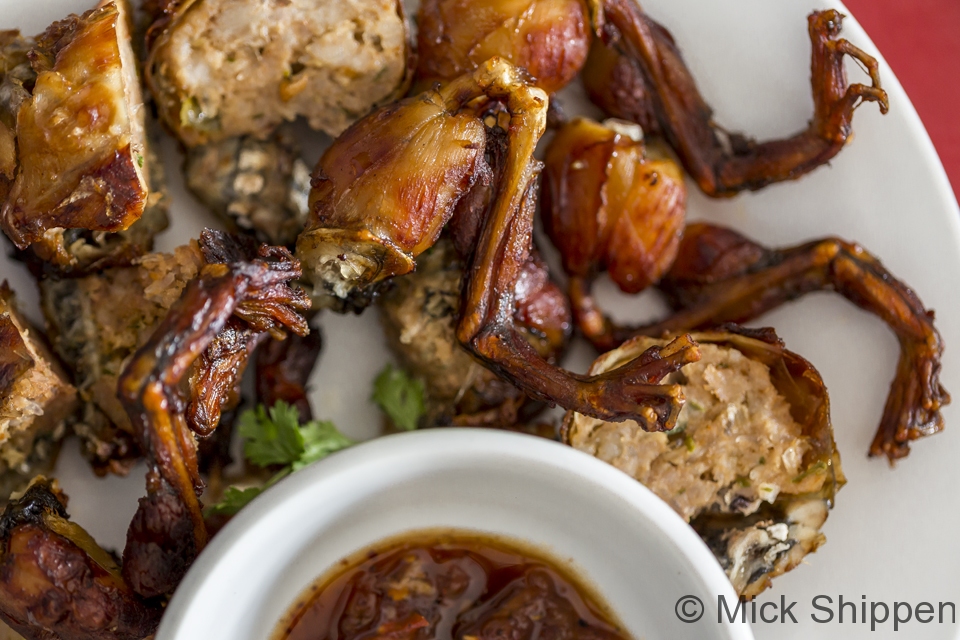
In Luang Prabang, regional dishes include the delicious aw laam, a kind of vegetable stew thickened with broken sticky rice and gently spiced with the addition of pieces of mai sakarn or pepperwood. It is traditionally made and at its best using dried buffalo meat but pork is also common (as is smoked and dried bamboo rat further north). There’s also sin savan, thin slices of sun-dried beef served with jaew bong, a roasted chilli paste, ua si khai, lemongrass stuffed with pork, gaeng som, a popular vibrant spicy and sour soup with fish, and stuffed frog.

The culinary landscape of Laos is no less effected by its past than is its architecture or its politics. In the late 60s and 70s, during the American war on Vietnam, many Vietnamese sought refuge in Laos. Today, the culinary tradition that they brought with them is very much part of the Lao food scene.
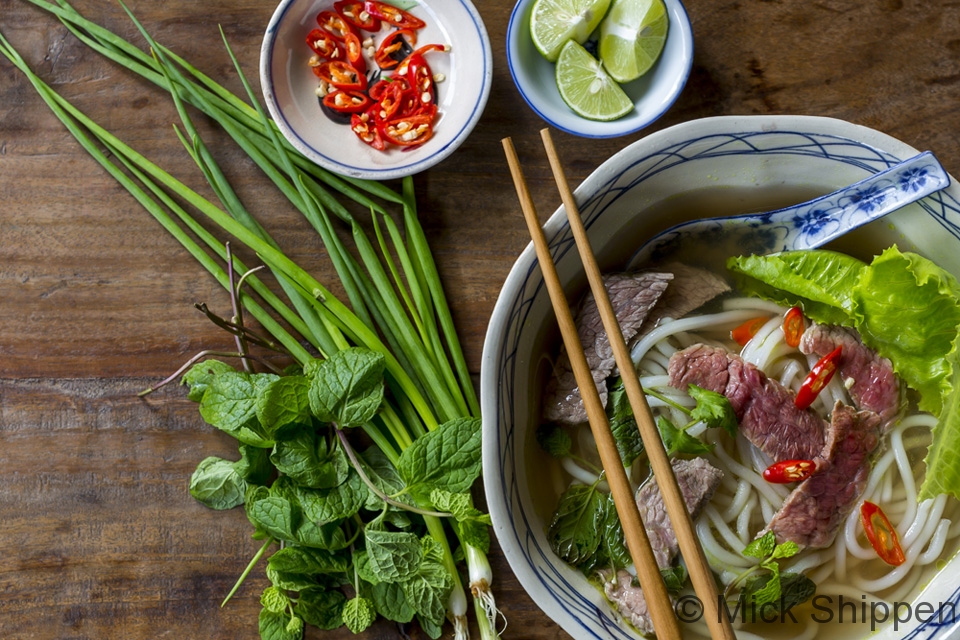
Vietnamese dishes include the ubiquitous pho, a comforting noodle soup of beef, buffalo, pork or chicken with liberal additions of fresh herbs and vegetables and, of course, fiery chillis, and many other noodle dishes.
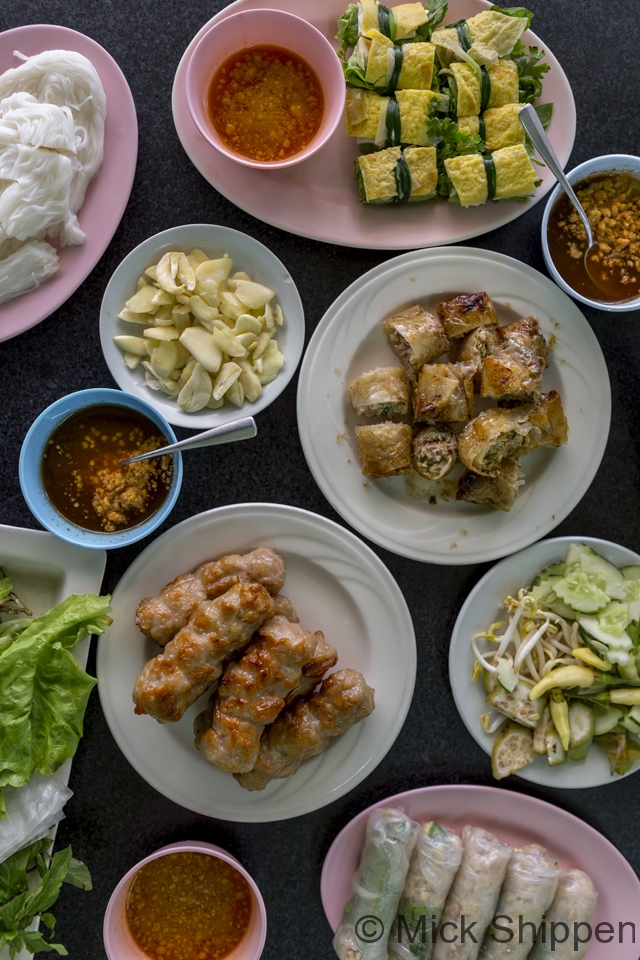
Vietnamese favourites also include naem neaung, tasty little ‘do-it-yourself’ rice paper wraps to fill with grilled pork balls, lettuce and herbs, ban cuan, steamed rice flour sheets stuffed with pork and mushrooms and yor kao and yor jeun, fresh and fried spring rolls.

If you are interested in learning more about Lao food, the book Traditional Recipes of Laos by Phia Sing published by Prospect Books is worth getting.
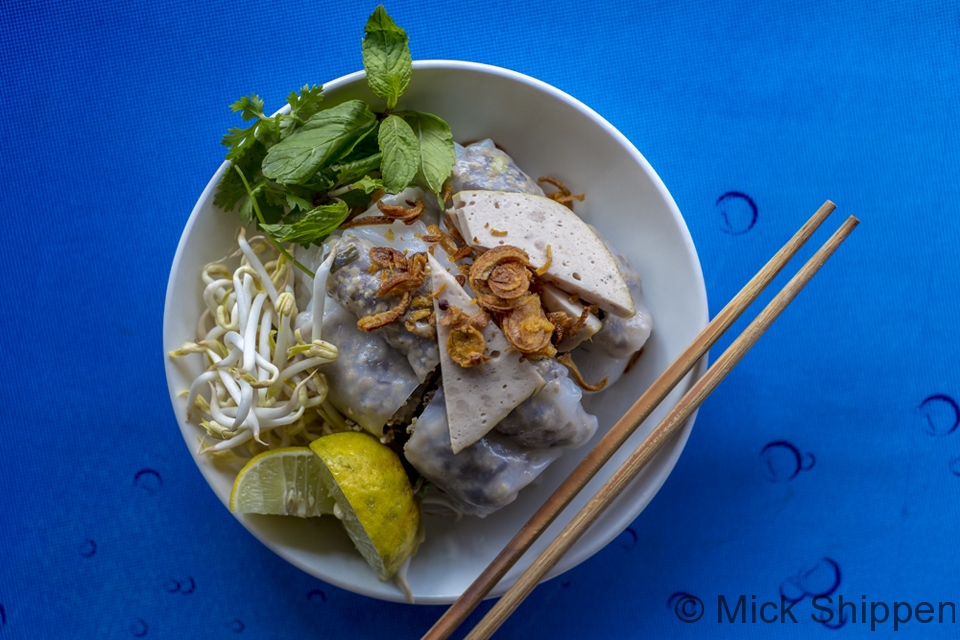
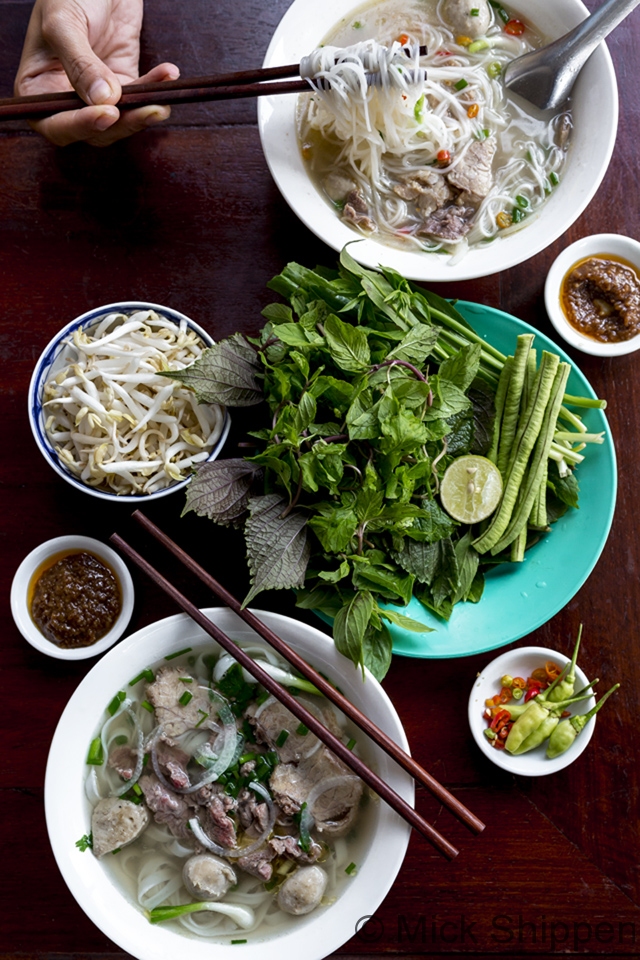
Laos marches, albeit at a sedate pace, on noodle soup. Pho, which was brought to the country by the Vietnamese, and khao biak sen, a more starchy noodle soup dish (and my favourite), are eaten enthusiastically for breakfast, lunch or dinner.
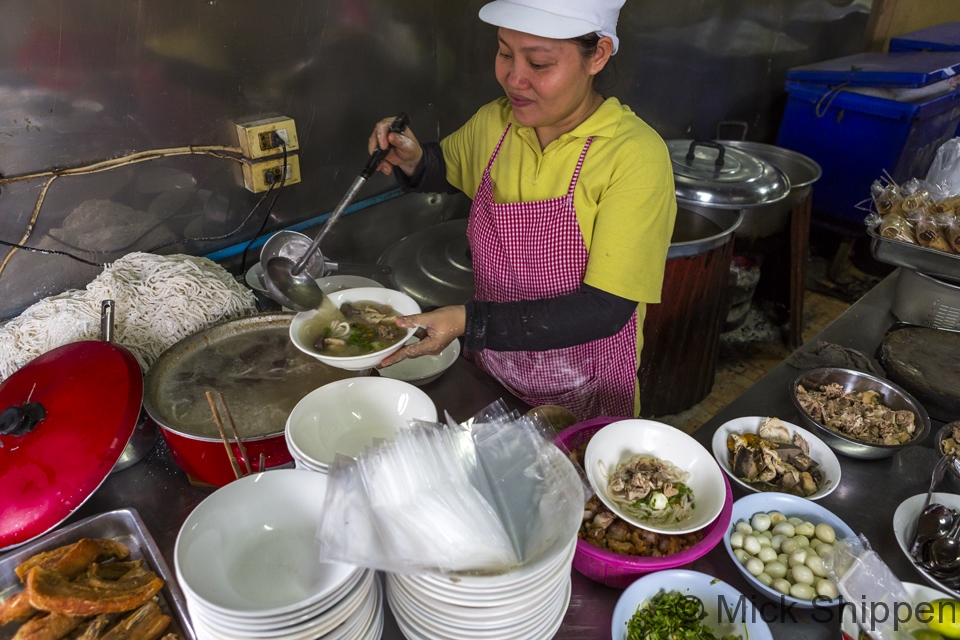
In any given town there are numerous pho shops and you would therefore think it an easy task to find an excellent bowl of noodles but this is not the case. In recent years Knorr stock powder has been aggressively marketed in the country and very few shops still make their own stock from bones. Additional MSG is added to the stockpot in large quantities and even offered as a condiment on the table. So, alas, finding a good bowl of what is a staple dish has become a challenge. These days your order can be anything from excellent to truly ghastly but most of the time it is mediocre at best.Who would have thought it would become so difficult to find a satisfying bowl of noodles in Laos?
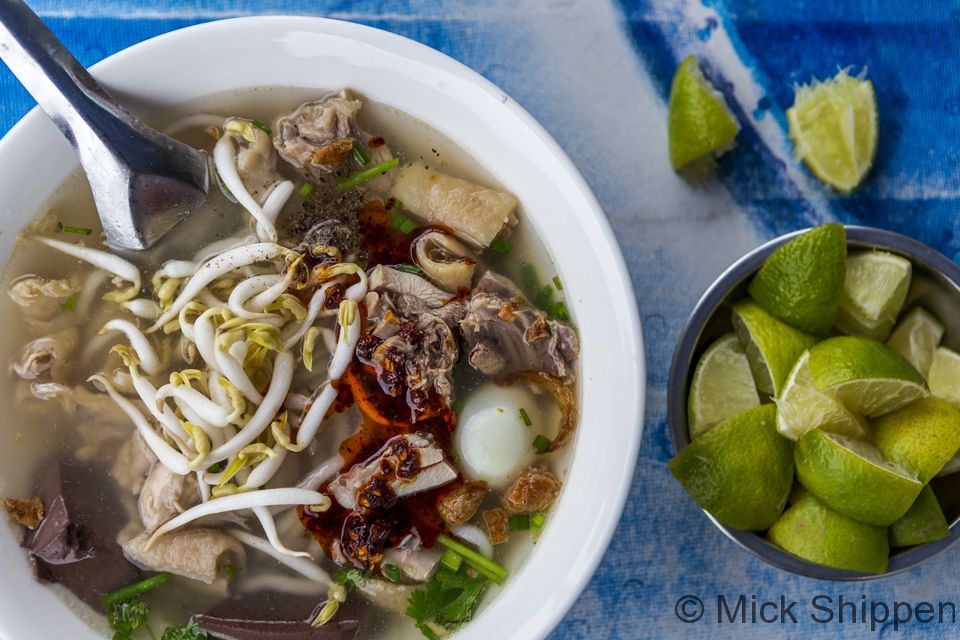
However, I might add that the ones pictured here (pho , top, khao biak sen the other two shots) were pretty damn good.

I was sad to receive a phone call around 8 pm last night telling me that Talat Tong Khan Kham, one of my favourite fresh markets in Vientiane was on fire. It was an enormous blaze that could be seen across the city and the entire market was destroyed.

I used to visit this once vibrant market every time I am in Vientiane and was only there very recently. I feel for the vendors who’s lives will be so badly affected by this tragedy.

It was a fantastic place to photograph. Colourful, chaotic, and a visual feast, the market was always full of friendly folks eager for a joke and a bit of banter.
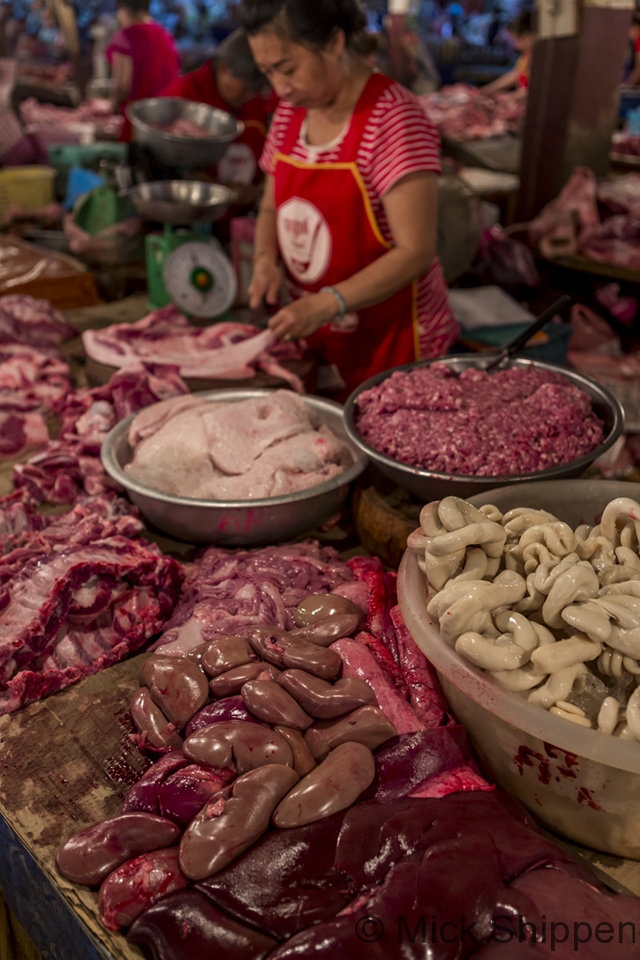
The traders are a resilient, hardworking bunch and I am sure they will be setting their produce out on a roadside somewhere tomorrow. Let’s hope the site gets cleared and rebuilt as quickly as possible.

It’s not often I give an image the black and white treatment. I prefer portraying Asia in full colour.
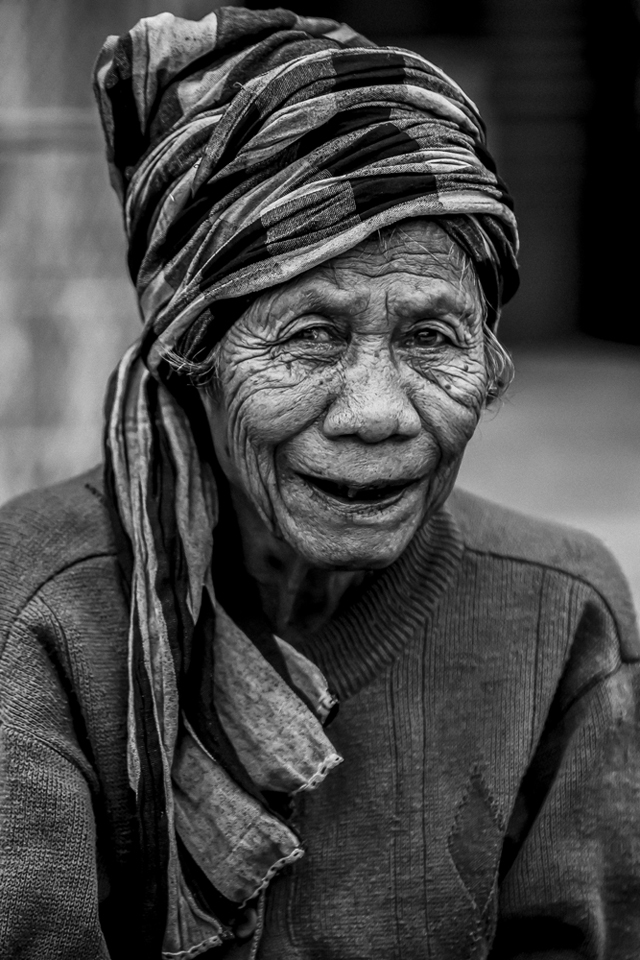
However, every now and again a face just cries out to be converted; like this old lady in the market.
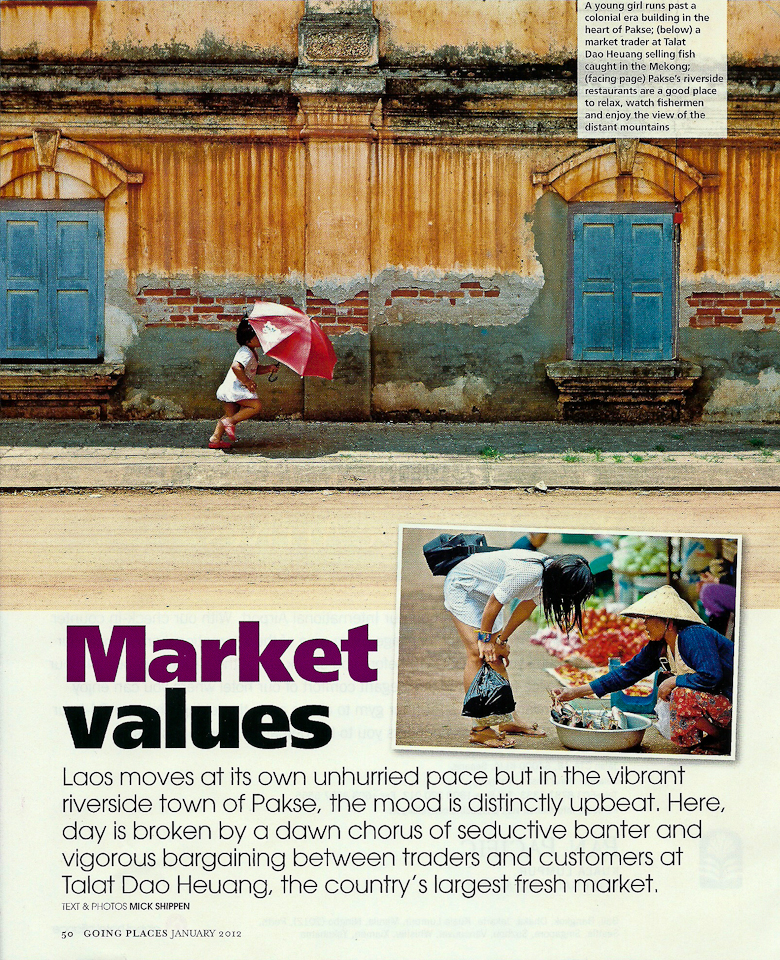
I flew down to Kuala Lumpur with Malaysia Airlines. It was nice to see a recent article of mine in their inflight magazine, ‘Going Places’. Thanks to editor, Vivian Chong, it is certainly one of the best inflight reads around at the moment. My feature was on the market town of Pakse in southern Laos. Here’s a scan of the opening page of the five page spread. If you want to know more about Pakse and are not flying with Malaysia Airlines in January, you can pick up my book, ‘Enchanting Laos’ online or at all good bookshops or have a look at pictures in the Portfolio.
I am sure it could be said that my postings are infrequent and when they do appear are distinctly lacking in words. The truth is I’ve never really got with the blogging thing. And the reason is simple; I work for a living. I have always considered irrepressible blogging to be a sure sign that someone has too much time on their hands.
The reason for the scarcity of postings is that for the last few months I have been travelling the length and breadth of Laos, Thailand and Cambodia taking pics for books. Well, the fruits of my labours, words and images, are soon to surface in a bookshop near you…and on the web.
The books were commissioned by John Beaufoy Publishing in the UK as part of the ‘Enchanting Asia’ series. The hardback Thai edition will be co-published with Asia Books.
This brand new ‘Enchanting Asia’ series are pictorial visitor guides showing many of the main cultural attractions that a tourist visiting for a week or so might expect to see. The 190 images in each book are accompanied by an introductory text with an overview of the history, geography, culture, festivals, food and so on. The second section is of images with extended captions.

Here’s an overview from my forthcoming book, ‘Enchanting Laos’.
‘Few countries conjure up such a sense of mystery and intrigue in the traveller’s mind as mountainous, landlocked Laos. Regarded as Southeast Asia’s sleepy backwater for many years, Laos’ communist government ensured that the country remained closed to the outside world. Unconcerned by neighbouring Thailand’s dash for modernity, Laos resolutely moved at its own pace. When the door was finally eased open for travellers in the early 90s, it revealed a beautiful country with a fascinating culture and an ethnically diverse population. Today, Laos is well and truly awakening from its slumber. The capital, Vientiane, bustles with renewed energy, but many of Laos’ attractions lie beyond the capital, where the rural population still ekes out an existence as subsistence farmers, fishermen, market traders and merchants. For many in the countryside, little has changed, and that is part of Laos’ enduring appeal for visitors.’
Here in Asia the books will be available in Asia Books throughout Thailand and Monument Books in Laos, Cambodia and Mynamar from November 4th 2011. Of course they will also be available in Europe and the USA at all good bookshops. You can also order online at Amazon. They are the perfect Christmas gift!
I am currently working on Enchanting Myanmar, a project that I am particularly excited about as it is the most fascinating country in Southeast Asia.